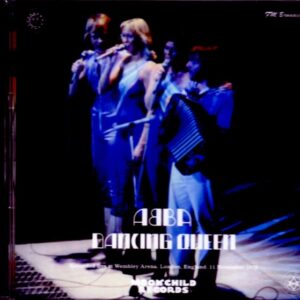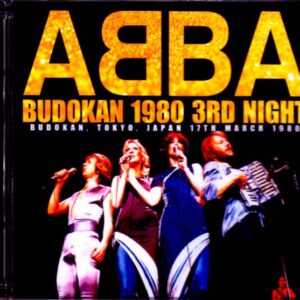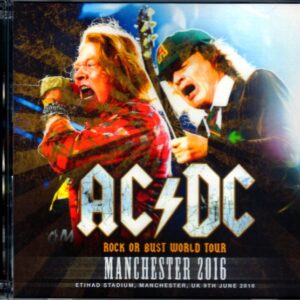Description
For Zeppelin fans, 1971 is remembered as a very fruitful year. For Japanese fans, it was the year of their first visit to Japan, and in addition to the opening medley of “Immigrant Song” and “Heartbreaker,” songs from the 4th album were added to the set list, and the stage composition became more substantial during this period. By this time, Zeppelin had already become a huge presence, boasting a number of audiences that could not be accommodated in the small venues of the past. In light of this situation, in early 1971, they went on a tour called BACK TO THE CLUBS TOUR, which deliberately visited small venues, and premiered songs from the 4th album. From a posterity perspective, the addition of Zeppelin classics such as “Rock and Roll,” “Stairway to Heaven,” and “Black Dog” made the whole show more dramatic. In particular, the guitar solo in the latter half of “Stairway to Heaven” takes longer every night than in the studio version, making it a highlight of the stage. [1971 North American Tour] In 1971, Zeppelin toured Europe in May and June, followed by North America in August and September. The summer North American tour included 26 shows in total, including two warm-up gigs in Montreux. It had been almost a year since the last tour, and it was the first time they had not performed live for such a long time. Meanwhile, other bands such as Grand Funk were emerging in the American rock scene, and Zeppelin needed to appeal to the American market and fans again. Plant shaved his beard from the previous year, and Zeppelin once again stood in front of American fans. The North American tour included their home ground, the LA Forum, and a vacation in Hawaii, where they performed in a relaxed and passionate manner, with warm atmospheres in every night. All of these performances are worthy of being called masterpieces, and many famous recordings have been produced from this tour, such as the soundboard recording of Orlando and the Los Angeles recording of “Slow and steady”. And the Berkeley performance in California should also be one of the famous recordings. If Honolulu was an additional performance that also served as a vacation during the long tour, this consecutive Berkeley performance was the final destination with a full concert. There is no need to talk about the relationship between LA and Zeppelin, but even on this tour, only the LA Forum and Berkeley were performed twice in a row, which shows how much Zeppelin valued the LA fans. [First day of the Berkeley performance on September 13, 1971] Compared to the second day, which had many high-quality titles that have existed for a long time, the number of titles on this first day was small, and only one sound source was confirmed. However, although not as good as the second day, it was recorded with sufficient high quality, and above all, it is a complete recording of the concert. The 1971 concert is recorded in full, and this alone is valuable. The source used is a 2nd Generation tape provided by a super-famous collector. Although the sound is somewhat echoey, it is recorded with uniform sound quality throughout. Most of the previously released versions have a somewhat excessive sound processing. It is not difficult to understand why you would want to raise the treble part of the somewhat muffled sound image, but due to the nature of this sound source, the sound processing is not effective and the original sound is inevitably distorted. In this work, the emphasis is on naturalness, and the processing is kept to a minimum to slightly reduce hiss. The highlight of the content is the encore performance of “Comminication Breakdown”. This version has the lyrics of “Gallows Pole” inserted in the middle. [September 14, 1971, second day of the Berkeley performance] William Stout is a famous illustrator who has worked on the jackets of many famous albums among Zeppelin collectors. Stout designed many album jackets at the time, not only for Zeppelin, but also for the Beatles, THE WHO, the Stones, and Clapton. His representative works include Zeppelin’s “BONZO’S BIRTHDAY PARTY” and “BURN LIKE A CANDLE,” the Stones’ “WELCOME TO NEW YORK,” and Clapton’s “STORMY MONDAY.” Stout probably drew his jackets with the same feeling as an ukiyo-e artist in the Edo period who was contracted to draw shunga to earn a living. And one of the masterpieces whose jacket matches the title and content of Stout’s album is this work, “GOING TO CALIFORNIA.” The analog bootleg “GOING TO CALIFORNIA” records the Berkeley concert on September 14, 1971, just before the legendary first performance in Japan. As a collector’s item released in the early days of the analog era, “GOING TO CALIFORNIA” released by the TMOQ label was a very popular performance due to its good sound quality. It can be said that the analog record made this performance famous. And it is also famous that the original tape source is still missing even in recent years, when so much excavation has progressed. In other words, even in this era when the CD era is about to end, the analog record from that time still has the best sound quality. And like many other previously released records, this work is a CD of the sound source created from the analog record. When tracing an analog sound source, the motor sound and needle sound of the turntable are structurally unavoidable problems. Of course, it is possible to process it mechanically when digitizing, but if it is done too much, it will affect the original sound itself, so it must be done carefully. This work is no exception, and although it has been processed to make the needle sound less noticeable, it has not been completely erased. This is because it is processed at the very limit of not affecting the original sound. Of course, the loud needle noise has been pinpoint removed, but please consider that the needle noise removal process has been done to the extent that it does not affect the sound of the original material, on the premise that the sound of the original material is respected. In addition, in the middle of “Stairway to Heaven”, Plant can be heard singing the lyrics “You are the house of the children of the sun ~ 笙ェ”, which is a very rare moment. The meaning is difficult to understand, but it can be said that it somehow fits the atmosphere and worldview of the song. [GOING TO CALIFORNIA TWO SHOWS] California, Berkeley performances held on two consecutive days on September 13th and 14th, 1971, are recorded on a four-disc set. The first day was recorded from a tape called 2nd Generation. And the second day was recorded from a digitized analog sound source. Rather than emphasizing “certain sounds” with mechanical equalization, it was produced with respect to the sound of the natural material as it is, and both days were produced with ease of listening in mind. This work is probably the best that can be thought of at present for these two performances. I would like you to listen to Zeppelin’s performance just before their first performance in Japan, emitting that divine light, with great emotion. BERKELEY COMMUNITY THEATER CA. U.S.A. September 13, 1971 DISC ONE 01. Introduction 02. Immigrant Song 03. Heartbreaker 04. Since I’ve Been Loving You 05. Black Dog 06. Dazed And Confused 07. Stairway To Heaven 08. Celebration Day 09. That’s The Way DISC TWO 01. Going To What California 02. Is And What Should Never Be 03. Moby Dick 04. Whole Lotta Love 05. Communication Breakdown BERKELEY COMMUNITY THEATER CA. U.S.A. September 14, 1971 DISC THREE 01. Immigrant Song 02. Heartbreaker 03. Since I’ve Been Loving You 04. Black Dog 05. Dazed And Confused DISC FOUR 01. Stairway To Heaven 02. That’s The Way 03. Going To California 04. Whole Lotta Love






Reviews
There are no reviews yet.